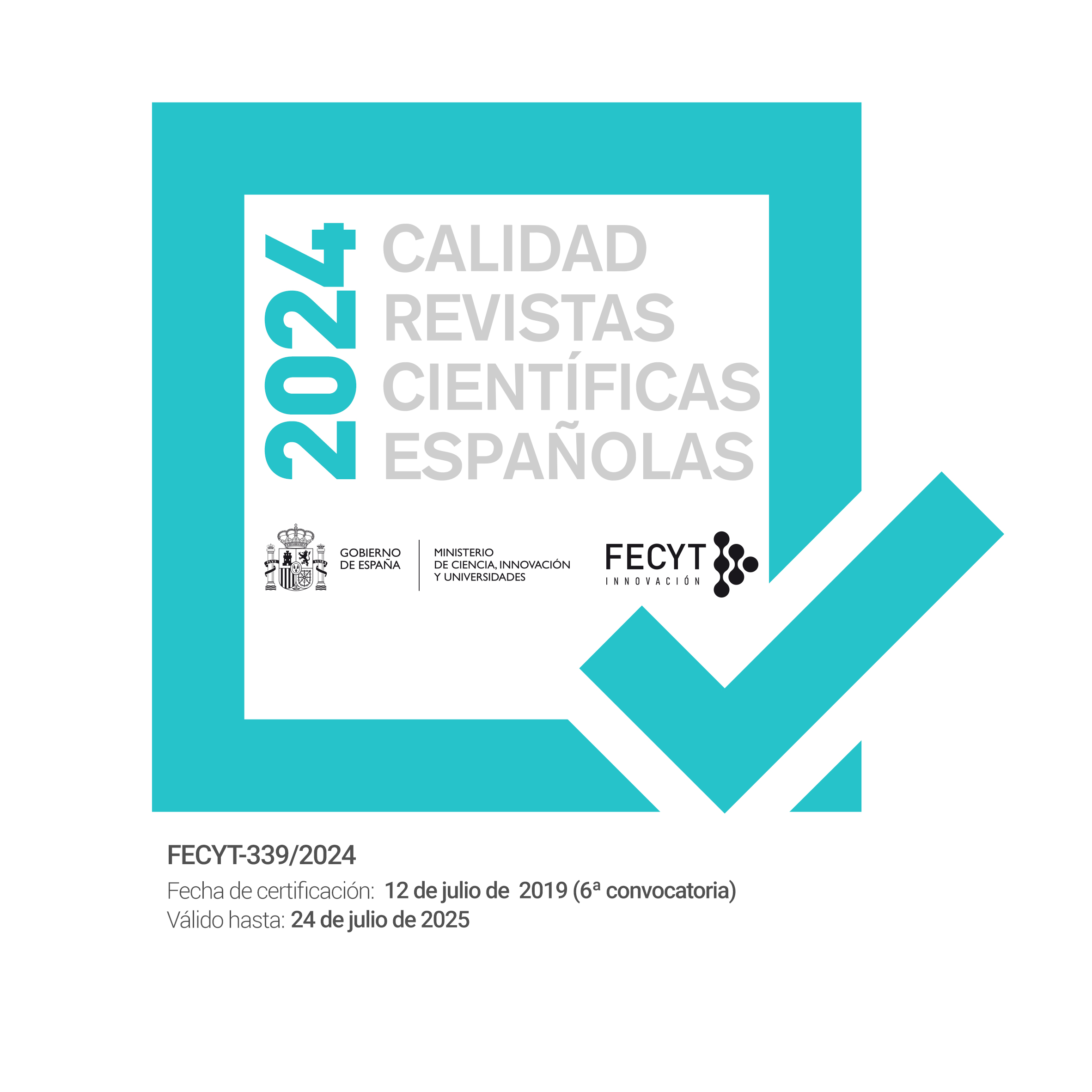Do artificial intelligence systems understand?
DOI:
https://doi.org/10.24310/crf.16.1.2024.16441Keywords:
Understanding, Artificial Intelligence, Machine Learning, IntelligenceAbstract
Are intelligent machines really intelligent? Is the underlying philosoph- ical concept of intelligence satisfactory for describing how the present systems work? Is understanding a necessary and sufficient condition for intelligence? If a machine could understand, should we attribute subjectivity to it? This paper addresses the problem of deciding whether the so-called ”intelligent machines” are capable of understanding, instead of merely processing signs. It deals with the relationship between syntax and semantics. The main thesis concerns the inevitability of semantics for any discussion about the possibility of building conscious machines, condensed into the following two tenets: ”If a machine is capable of understanding (in the strong sense), then it must be capable of combining rules and intuitions”; “If semantics cannot be reduced to syntax, then a machine cannot understand.” Our conclusion states that it is not necessary to attribute understanding to a machine in order to explain its exhibited “intelligent” behavior; a merely syntactic and mechanistic approach to intelligence as a task-solving tool suffices to justify the range of operations that it can display in the current state of technological development.
Downloads
Metrics
Publication Facts
Reviewer profiles N/A
Author statements
Indexed in
-
—
- Academic society
- N/A
- Publisher
- Asociación para la promoción de la filosofía y la cultura en Málaga (FICUM) y UMAEditorial
References
Abadi, M., Barham, P., Chen, J., Chen, Z., Davis, A., Dean, J., Devin, M., Ghemawat, S., Irving, G., Isard, M., et al. (2016): “TensorFlow: a
system for Large-Scale machine learning”, in 12th USENIX Symposium on Operating Systems Design and Implementation (OSDI 16), pp. 265–283.
Achler, T. (2012): “Artificial general intelligence begins with recognition: Eval- uating the flexibility of recognition”, in: Wang, P., Goertzel, B. (eds.) Theoretical Foundations of Artificial General Intelligence, pp. 197–217. New York: Springer.
Alayrac, J. B., Donahue, J., Luc, P., Miech, A., Barr, I., Hasson, Y., Lenc, K., Mensch, A., Millican, K., Reynolds, M., et al. (2022): “Flamingo: a visual language model for few-shot learning”, Arxiv preprint, arXiv:2204.14198
Baumberger, C., Beisbart, C., Brun, G. (2017), “What is understanding? An overview of recent debates in epistemology and philosophy of science”, in Explaining understanding: New perspectives from epistemology and philosophy of science, pp. 1–34. London: Routledge.
Bellmund, J. L., Gärdenfors, P., Moser, E. I., & Doeller, C. F. (2018). “Navigating cognition: Spatial codes for human thinking”, Science, 362 (6415).
Blanco Pérez, C. A. (2020): The Integration of Knowledge. New York: Peter Lang.
Chomsky, N. (1957): Syntactic structures. Berlin: De Gruyter.
Chomsky, N. (1980): “Rules and representations”, Behavioral and brain sciences 3 (1), pp. 1–15.
Clocksin, W.F., Mellish, C.S. (2003): Programming in PROLOG. New York: Springer.
Das, J. (2019): “Rules and tools of intelligence: How IQ became obsolete”, in Progress in Psychological Science Around the World. London: Routledge, pp. 71-90.
De Raedt, L., Dumančić, S., Manhaeve, R., Marra, G. (2020): “From statistical relational to neuro-symbolic artificial intelligence”, ArXiv
preprint, arXiv:2003.08316
Eykholt, K., Evtimov, I., Fernandes, E., Li, B., Rahmati, A., Xiao, C., Prakash, A., Kohno, T., Song, D. (2018): “Robust physical-world attacks
on deep learning visual classification”, in Proceedings of the IEEE Conference on Computer Vision and Pattern Recognition, pp. 1625–1634.
Floridi, L., Chiriatti, M. (2020): “Gpt-3: Its nature, scope, limits, and consequences”, Minds and Machines 30 (4), pp. 681–694.
Fodor, J.A. (1995): The Elm and the Expert: Mentalese and Its Semantics. Cambridge: MIT press.
Gardenfors, P. (2014): The Geometry of Meaning: Semantics Based on Conceptual Spaces. Cambridge: MIT press.
Ghotbi, N. (forthcoming): “The ethics of emotional artificial intelligence: A mixed method analysis”, Asian Bioethics Review, pp. 1–14,
https://doi.org/10. 1007/s41649-022-00237-y Goodfellow, I. J., Shlens, J., Szegedy, C. (2014): “Explaining and harnessing adversarial examples”, ArXiv preprint, arXiv:1412.6572
Haugeland, J. (1989). Artificial intelligence: The very idea. Cambridge: MIT press.
Hilliard III, A. G. (1979): “Standardization and cultural bias impediments to the scientific study and validation”, Journal of Research
and Development in Education 12 (2), pp. 47–58.
Kaelbling, L. P., Littman, M.L., Moore, A.W. (1996): “Reinforcement learning: A survey”, Journal of artificial intelligence research 4, pp. 237–285.
Kant, I. (1908): Critique of pure reason. Cambridge: Modern Classical Philosophers.
Landgrebe, J., Smith, B. (2022): Why Machines Will Never Rule the World: Artificial Intelligence Without Fear. London: Taylor & Francis.
LaValle, S. M. (2006). Planning algorithms. Cambridge: Cambridge university press.
LeCun, Y., Bengio, Y., Hinton, G. (2015): “Deep learning”, Nature 521 (7553), pp. 436– 444.
Legg, S., Hutter, M., et al. (2007): “A collection of definitions of intelligence”, Frontiers in Artificial Intelligence and applications 157, p. 17.
Lin, T., Wang, Y., Liu, X., Qiu, X. (2021): “A survey of transformers”. ArXiv preprint, arXiv:2106.04554
Madry, A., Makelov, A., Schmidt, L., Tsipras, D., Vladu, A. (2017): “Towards deep learning models resistant to adversarial attacks”, ArXiv
preprint, arXiv:1706.06083
Merchán, E.C.G., Molina, M. (2020): “A machine consciousness architecture based on deep learning and gaussian processes”, in International Conference on. Moyal, R., Fekete, T., Edelman, S. (2020): “Dynamical emergence theory (det): A computational account of phenomenal consciousness”, Minds and Machines 30 (1), pp. 1–21, https://doi.org/10.1007/s11023-020-09516-9
Murphy, K. P. (2022). Probabilistic machine learning: an introduction. Cambridge: MIT press.
Nagel, T. (1974): “What is it like to be a bat?”, The philosophical review 83 (4), pp. 435–450.
Pearl, J. (2009): Causality. Cambridge: Cambridge university press.
Penrose, R. (1994): Shadows of the Mind. Oxford: Oxford University Press.
Pietka, D. (2020): “The issue of intellectual intuition in metaphysics”, Studia Philosophiae Christianae 56 (S1), pp. 165–185, https://doi.org/10.21697/spch.2020.56.s1.10
Poon, H., Domingos, P. (2011): “Sum-product networks: A new deep architecture”, in 2011 IEEE International Conference on Computer Vision Workshops (ICCV Workshops), pp. 689–690.
Puente, C., Sobrino, A., Olivas, J. A., Garrido, E. (2017): “Summarizing information by means of causal sentences through causal graphs”, Journal of Applied Logic 24, pp. 3–14.
Ramesh, A., Pavlov, M., Goh, G., Gray, S., Voss, C., Radford, A., Chen, M., Sutskever, I. (2021): “Zero-shot text-to-image generation”,
International Conference on Machine Learning, pp. 8821–8831.
Searle, J.R. (1982): “The chinese room revisited”, Behavioral and brain sciences 5 (2), pp. 345–348.
Seifert, J., Friedrich, O., Schleidgen, S. (2022): “Imitating the human. New human-machine interactions in social robots”, NanoEthics 16 (2), pp. 181–192, https://doi.org/10.1007/s11569-022-00418-x
Sowa, J. F. (1992). Semantic networks. Encyclopedia of artificial intelligence, 2, 1493-1511.
Sullivan, E. (2022): “Understanding from machine learning models”, The British Journal for the Philosophy of Science, https://www.journals.uchicago.edu/doi/10.1093/bjps/axz035
Zadeh, L.A. (1988), “Fuzzy logic”, Computer 21 (4), pp. 83–93.
Zhai, J., Zhang, S., Chen, J., He, Q. (2018): “Autoencoder and its various variants”, in IEEE International Conference on Systems, Man, and
Cybernetics (SMC), pp. 415–419.
Downloads
Published
How to Cite
Issue
Section
License
Copyright (c) 2024 Carlos Blanco Pérez

This work is licensed under a Creative Commons Attribution-NonCommercial-ShareAlike 4.0 International License.
Esta revista provee acceso libre inmediato a su contenido bajo el principio de hacer disponible gratuitamente la investigación al público. Todos los contenidos publicados en Claridades. Revista de Filosofía, están sujetos a la licencia Creative Commons Reconocimento-NoComercia-Compartirigual 4.0 cuyo texto completo puede consultar en <http://creativecommons.org/licenses/by-nc-sa/4.0>
Es responsabilidad de los autores/as obtener los permisos necesarios de las imágenes que están sujetas a derechos de autor.
Los autores/as cuyas contribuciones sean aceptadas para su publicación en esta revista conservarán el derecho no exclusivo de utilizar sus
contribuciones con fines académicos, de investigación y educativos, incluyendo el auto-archivo o depósito en repositorios de acceso abierto de cualquier tipo.
La edición electrónica de esta revista esta editada por la Editorial de la Universidad de Málaga (UmaEditorial), siendo necesario citar la procedencia en cualquier reproducción parcial o total.

















6.png)
